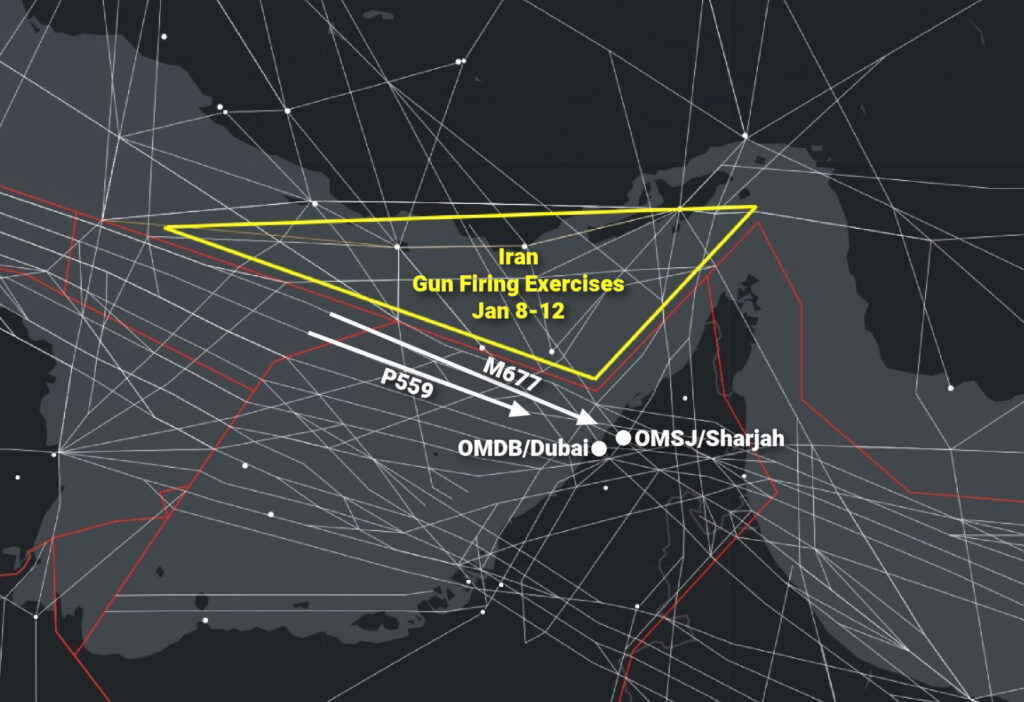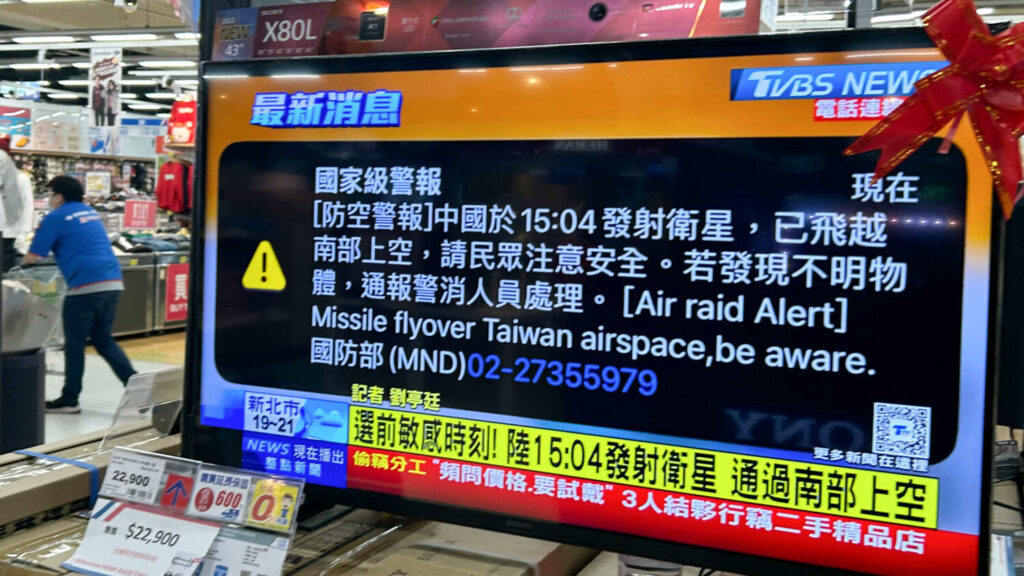While operational news has been quiet for the start of 2024, some important changes to airspace risk have been gracing the OPSGROUP news feed in recent days. Here’s a brief summary of what you may have missed…
Syria
The FAA has extended its ban on US operators entering Syrian airspace (the OSTT/Damascus FIR) by a full five years. The new SFAR expires in 2028.
And with good reason – it is an active conflict zone. There are multiple risks to civil aviation there at all levels, including the very real threat of coming under fire from Syrian air defenses.
In addition to the US flight ban, several other states maintain active airspace warnings for the region. Almost no traffic overflies Syria – give it a wide berth. The updated SFAR 114 provides some updated background info on the airspace. Safeairspace.net also has a useful briefing.
Egypt
EASA has withdrawn its Conflict Zone Information Bulletin (CZIB) for Egypt – and we’re not really sure why. These CZIBs are largely based on what airspace warnings other countries have issued, and the UK and Germany still have active airspace warnings for Egypt – both countries advise against overflights below FL260 in the northern part of the Sinai region.

HEAR/Al Arish airport in particular near the Egypt/Gaza border has been identified as a potential terrorist target due to its use in humanitarian efforts. And since November 2023, the UK has been warning of risks to aircraft operating over the Red Sea due to military activity (more on that below).
Bottom line, we’re not seeing a reduction in risk. If anything, the threat to aircraft has likely escalated.
The Red Sea
Sporadic drones and missiles continue to be intercepted in the Southern Red Sea by foreign militaries. On January 9, the largest single attack yet happened with over twenty-four shot down by US forces in the area. This represents a significant increase in risk for civil aviation. The culprits are Houthi rebels in Yemen who are typically targeting western vessels, or Israel itself.

The situation in the Red Sea continues to escalate with military air defence systems seeing frequent use in open airspace.
Back in November, the UK issued a new airspace warning due to these types of events. The threat is typically low level (below FL160) but the frequency of these occurrences is a major concern. Some OPSGROUP members have already reported flying longer, alternative routes to avoid the area.
 The primary risks to overflights are from misidentification or mis-targeting. The military air defence equipment present is advanced, and capable of reaching all levels.
The primary risks to overflights are from misidentification or mis-targeting. The military air defence equipment present is advanced, and capable of reaching all levels.

New UK airspace warning issued November 1 for the Red Sea (and Gulf of Aqaba).
The Middle East
Iran has published a whole bunch of Notams under the OIIX/Tehran FIR code warning of ‘gun firing and military exercises’ between Jan 8-12 in the Strait of Hormuz. This is the sea just north of Dubai.
The areas where this will be happening are very close to overwater airways in the adjoining OMAE/Emirates FIR which get heavily used by flights heading from Europe to Dubai airports.

The yellow area isn’t exactly right – there are several different gun firing exercises within this area from Jan 8-12.
The US has a longstanding warning to avoid these airways nearest to the OIIX/Tehran FIR whenever possible, to reduce the risk of miscalculation or misidentification by air defence systems – good advice, especially for this period of time.
Taiwan
There was some panic on January 9 when a presidential missile warning was issued by authorities for Taiwanese airspace. It was the first time this has happened.

On Jan 9, this alarming missile warning was issued across Taiwan.
It was later clarified that this was due to the launch of a Chinese satellite (not a missile) and posed a minor debris risk. Taiwan is on the eve of a major presidential election – and tensions with China are high.
There appears to be a renewed level of military posturing from both sides which can increase the risk of mistaken identity – especially in the Taiwanese air defence identification zone (ADIZ) if proper procedures are not followed.
These are known risks but are worth reviewing. Some sources are suggesting an escalation is possible this year, which carries the risk of a new and dangerous conflict. In this case, regional overflights would be heavily affected. We’ll continue to monitor the situation closely.
GPS Spoofing in the Black Sea
We’re continuing to receive frequent pilot reports of significant GPS spoofing events in the busy southwestern corner of the Black Sea.
In some cases, this has carried the threat of an unintentional deviation into Russian or Turkish airspace without a clearance.
Reports have been received from various aircraft types on different airways, and have included a complete loss of all navigation capability, transponder functions or nuisance EGPWS warnings.
So far manufacturers and aviation authorities have been slow to react to this emerging threat. Although some type-specific guidance has been issued, the universal mitigator remains disabling GPS before entering an area of known spoofing.
An important reminder – IRS systems are not immune to GPS interference. By the time you identify spoofing, it may be too late to rely on them alone. We’ve written about this topic extensively – read all about it here.
Updates
We continue to monitor for signs of changing airspace risk. We report these changes on safeairspace.net and via alerts issued to OPSGROUP members.
If you know or hear something, please share it with us. You can reach us at team@ops.group. We’d love to hear from you.
More on the topic:
- More: Haiti Crisis: Airport Attacked, Aircraft Shot
- More: Get ready for more North Korean missiles
- More: Airspace Risk: Conflict Zones and Security in 2023
- More: Ukraine-Russia Spillover Risks: Nov 2022
- More: North Korea Missile Threat
More reading:
- Latest: OPSGROUP is hiring! Wanted: Junior International Ops Specialist
- Latest: LOA Guide for US Operators
- Latest: NAT Ops: Flying the Blue Spruce Routes
- Safe Airspace: Risk Database
- Weekly Ops Bulletin: Subscribe
- Membership plans: Why join OPSGROUP?












 Get the famous weekly
Get the famous weekly 






Dear Chris, thanks a lot for this article, very helpful. I have a question, regarding Red Sea – is it really Southern Red Sea that presents risks of misidentification? As closer to Izrael seems the Northern Red Sea part… Thanks!